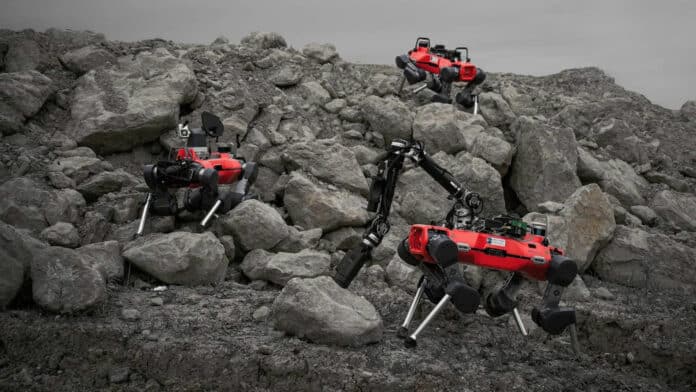Robots play a crucial role in space exploration, allowing us to explore places that are too risky or difficult for human astronauts to reach. Robots can be designed to operate in harsh environments and withstand extreme temperatures and radiation of distant planets, enabling us to gather essential data and perform complex tasks in environments. The robots can collect samples, conduct experiments, and even repair or maintain equipment with minimal human intervention.
Yet, many sites of interest are inaccessible to planetary mission exploration robots because of the robots’ inability to traverse steep slopes, unstructured terrain, and loose soil. In addition, current single-robot approaches only allow a limited exploration speed and a single set of skills.
Researchers at Switzerland’s ETH Zurich University are now exploring the possibility of sending not just one solitary rover on an exploration tour but rather an entire team of vehicles and flying devices that complement each other.
They equipped three ANYmal – a type of legged robot developed at ETH – with a range of measuring and analysis instruments that would make them suitable future exploration devices.
Engineers programmed each ANYmal with specific lunar tasks. One robot was taught to map and classify its surrounding landscape using a laser scanner and several cameras, while the other one was programmed to precisely identify rocks using a Raman spectrometer and a microscopy camera. Finally, the third one could both map the terrain and identify rocks, which meant that it had a broader range of tasks than the specialists, but with less precision.
“Using multiple robots has two advantages,” explains Philip Arm, a doctoral student in the group led by ETH Professor Marco Hutter. “The individual robots can take on specialized tasks and perform them simultaneously. Moreover, thanks to its redundancy, a robot team is able to compensate for a teammate’s failure.”
Recently, researchers tested the fleet of space exploration robots, each with different capabilities, on a variety of terrains across Switzerland and at the European Space Resources Innovation Centre (ESRIC) in Luxembourg. The team’s redundancy-focused robot fleet even won an ESRIC and ESA Space Resources Challenge, where teams were tasked to locate and identify minerals and place them throughout the test area.
In addition to legged robots, this work will also involve robots with wheels. Robots with wheels are at a disadvantage in these kinds of conditions, but they can move faster on less challenging terrain. For a future mission, it would therefore make sense to combine robots that differ in terms of their mode of locomotion. Flying robots could also be added to the team.
At present, the robots are manually operated via a control center, but the ETH Zurich team also plans to make the robots more autonomous. In the future, semi-autonomous robots could directly assign certain tasks to each other, with control and intervention options for the operator.
Journal reference:
- Philip Arm, Gabriel Waibel, Jan Preisig, Turcan Tuna, Ruyi Zhou, Valentin Bickel, Gabriela Ligeza, Takahiro Miki, Florian Kehl, Hendrik Kolvenbach, and Marco Hutter. Scientific exploration of challenging planetary analog environments with a team of legged robots. Science Robotics, 2023; DOI: 10.1126/scirobotics.ade9548
